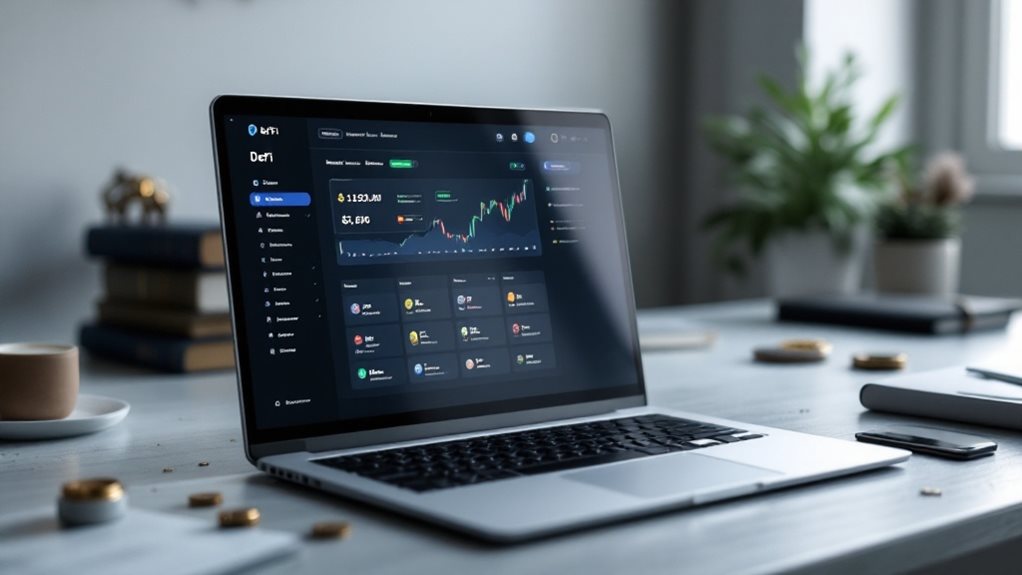A DeFi wallet is a non-custodial digital tool that lets users fully control their cryptocurrency and interact with decentralized finance services. It works like a gateway to blockchain-based financial activities such as lending, staking, and trading tokens. These wallets support multiple cryptocurrencies, offering built-in security features like encryption and two-factor authentication. With typically lower fees than traditional services, DeFi wallets are transforming how people manage and grow their digital assets.

A DeFi wallet serves as a digital gateway to the world of decentralized finance. It's a non-custodial cryptocurrency wallet that lets users store and manage their digital assets without relying on third parties like banks or financial institutions. Unlike traditional wallets, DeFi wallets give users complete control over their private keys and assets, making them truly independent in managing their digital wealth. Hot wallets are commonly used due to their online accessibility and user-friendly interfaces.
These wallets support multiple cryptocurrencies and tokens across different blockchain networks. They're designed to work seamlessly with decentralized applications, known as dApps, and various DeFi protocols. Users can participate in activities like lending, staking, and token swaps directly through their wallet interface, often at lower fees compared to centralized exchanges. Users can earn rewards on 25+ tokens through various staking and cashback opportunities. The transaction costs of 0.1-0.5% are significantly lower than traditional financial services.
Security is a top priority for DeFi wallets. They use encryption to protect private keys and often include two-factor authentication to prevent unauthorized access. If something goes wrong, users can recover their wallets using seed phrases – special sequences of words that act as backup codes. Many DeFi wallets are open-source, allowing the community to review the code and identify potential security issues. They're also compatible with hardware wallets for those who want to store their assets offline. Operating on a peer-to-peer network, these wallets enhance security and privacy compared to centralized alternatives.
The user experience of DeFi wallets is designed to be straightforward and accessible. Most wallets offer mobile apps and browser extensions, making it easy to manage digital assets on the go. Users can check their balances in real-time, view their transaction history, and swap tokens without leaving the wallet interface. Some wallets even support NFT storage and management, adding another layer of functionality for digital asset enthusiasts.
DeFi wallets break down geographical barriers in financial services. Anyone with an internet connection can access these wallets and participate in the DeFi ecosystem. They connect smoothly with popular platforms like Uniswap and Aave, allowing users to engage in various financial activities without traditional banking restrictions.
The integration capabilities of DeFi wallets make them powerful tools for cryptocurrency users. They serve as a bridge between traditional cryptocurrency storage and the expanding world of decentralized finance.
These wallets combine security features with user-friendly interfaces, making complex DeFi operations accessible to everyday users. As the DeFi ecosystem continues to grow, these wallets play an increasingly important role in how people interact with digital assets and decentralized financial services.
Frequently Asked Questions
How Do I Recover My Defi Wallet if I Lose My Phone?
If someone loses their phone with a DeFi wallet, they can recover it using their seed phrase.
It's a set of 12-24 words that was created when they first set up the wallet.
They'll need to install the wallet app on a new device, select "restore wallet," and enter these words in the correct order.
Once entered, the wallet will sync with the blockchain, showing their funds and transaction history.
Can I Connect Multiple Defi Wallets to the Same Cryptocurrency Exchange?
Yes, users can connect multiple DeFi wallets to the same cryptocurrency exchange.
Most exchanges support this feature through their API integration systems. It's common for traders to link several wallets for different purposes, like keeping personal and trading funds separate.
Each wallet needs its own authentication setup. While exchanges typically allow multiple connections, they often have limits on the total number of wallets that can be linked.
What Are the Hidden Fees Associated With Defi Wallet Transactions?
DeFi wallet transactions come with several hidden fees that aren't always obvious.
There's network congestion fees that go up during busy times, gas fees for smart contract actions, and platform-specific charges for swaps or trades.
Users might also face withdrawal fees when moving assets between platforms.
Some wallets include subscription fees for premium features.
Different blockchains have their own fee structures that can change throughout the day.
Are Defi Wallets Regulated by Government Financial Authorities?
DeFi wallets aren't directly regulated by government financial authorities right now. They exist in what's called a "gray area" where specific rules haven't been created yet.
While regulators are looking into ways to oversee DeFi wallets, it's tricky because they're decentralized and work across different countries.
Some governments are thinking about new rules, especially for things like preventing money laundering, but there aren't clear regulations in place yet.
Can Hackers Steal My Assets if They Gain Access to My Device?
Yes, hackers can steal crypto assets if they gain access to someone's device.
Malware, keyloggers, and screen capture software can record wallet passwords and seed phrases. Hackers can then use this information to access wallets and transfer funds.
They can also exploit unsecured Wi-Fi networks to intercept wallet data. Additionally, if private keys aren't properly encrypted, attackers who compromise a device may be able to steal them directly.





